23 june 2018
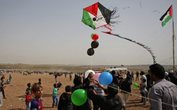
Israeli Justice Minister Ayelet Shaked has warned that her government may launch a new war on Gaza Strip because Palestinians continue to fly “incendiary kites” over Israeli farms.
Shaked said that Israel, which developed the iron dome anti-missile system, is able to develop a new system to take down the Palestinian kites. She claimed that the Palestinian children who fly kites are “terrorists” involved in “terrorism.”
The minister echoed similar remarks made by the Israel’s Public Security Minister, Gilad Erdan, who was reported by Haaretz, on Thursday, as saying that Israel might be “forced” to launch a “large-scale military operation” in the Gaza Strip.
“I do not want to launch an operation, but there is a good chance that we will have no other option but to go in so that we can create durable deterrence,” he told Israeli Army Radio.
Erdan added, according to Days of Palestine, that those who launch ‘burning kites’ from Gaza should be shot, regardless of their age. “Age does not matter,” he insisted. “They are terrorists and the danger they create must be prevented.”
The Palestinians in the Gaza Strip continue to point out that their protests are entirely legitimate under international law.
To call them terrorists, they insist, is not only inaccurate, but also an attempt by the Israelis and their supporters to deceive the world about the nature of the conflict in occupied Palestine.
It is worth mentioning that Israel has started to launch drone attacks against Palestinian children who fly kites along the eastern borders of the Gaza Strip.
06/23/18 Israel Turns Gaza into ‘Arms Race’ Laboratory, While Palestinians Fly Kites (pt 1/2)
Shaked said that Israel, which developed the iron dome anti-missile system, is able to develop a new system to take down the Palestinian kites. She claimed that the Palestinian children who fly kites are “terrorists” involved in “terrorism.”
The minister echoed similar remarks made by the Israel’s Public Security Minister, Gilad Erdan, who was reported by Haaretz, on Thursday, as saying that Israel might be “forced” to launch a “large-scale military operation” in the Gaza Strip.
“I do not want to launch an operation, but there is a good chance that we will have no other option but to go in so that we can create durable deterrence,” he told Israeli Army Radio.
Erdan added, according to Days of Palestine, that those who launch ‘burning kites’ from Gaza should be shot, regardless of their age. “Age does not matter,” he insisted. “They are terrorists and the danger they create must be prevented.”
The Palestinians in the Gaza Strip continue to point out that their protests are entirely legitimate under international law.
To call them terrorists, they insist, is not only inaccurate, but also an attempt by the Israelis and their supporters to deceive the world about the nature of the conflict in occupied Palestine.
It is worth mentioning that Israel has started to launch drone attacks against Palestinian children who fly kites along the eastern borders of the Gaza Strip.
06/23/18 Israel Turns Gaza into ‘Arms Race’ Laboratory, While Palestinians Fly Kites (pt 1/2)
|
|
As Israel mows down protesters in Gaza with brutal military technology, Palestinians respond creatively, with kites and balloons. Shir Hever discusses the hidden rift within the Israeli military.
Shir Hever is an economic researcher in the Alternative Information Center, a Palestinian-Israeli organization active in Jerusalem and Beit-Sahour. Researching the economic aspect of the Israeli occupation of the Palestinian territories, some of his research topics include the international aid to the Palestinians and to Israel, the effects of the Israeli occupation of the Palestinian territories on the Israeli economy, and the boycott, divestment and sanctions campaigns against Israel. His work also includes giving lectures and presentations on the economy of the occupation. His first book: Political Economy of Israel’s Occupation: Repression Beyond Exploitation, has been published by Pluto Press. TRNN video & transcript: BEN NORTON:It’s The Real News. I’m Ben Norton. The Great March of Return has continued in Gaza now for 11 weeks. Palestinians are holding regular demonstrations along the Gaza fence, protesting the crippling Israeli siege and the illegal denial of their basic rights under international law. The current death toll stands at 129 unarmed protesters, who were gunned down by Israeli forces since March 30, with many thousands more wounded by live ammunition. The Israeli Air Force pounded the Gaza Strip over the weekend, but no casualties were reported. Meanwhile, the thousands of injured protesters are more than the health facilities in Gaza can handle. |
Medical staff have repeatedly warned that protesters are arriving at the hospitals with severe wounds that are a sign that the Israeli army is likely using munitions that are prohibited under the Geneva Convention. As Israel continues to deny entry to patients in need of medical attention, many of the protesters have had their limbs amputated.
Palestinians in Gaza have adopted many creative ways of responding to the overwhelmingly violent weaponry wielded by Israeli forces, flying kites and balloons into Israeli territory, sometimes carrying Molotov cocktails. This has taken the Israeli military by surprise. As the Israeli Air Force started sending drones to hunt kites and balloons in the sky, Palestinians have developed a kite fitted with a fishing net which they call the New Model F-16, to try to catch Israeli drones in the air. Ahmed Abu Attaia offers another example of Palestinian creative resistance, as he collects tear gas canisters and turns them into decorations.
AHMED ABU ATTAIA: I am doing this so we always remember our homeland and the oppression of the occupation. Because the occupation is not firing flowers at us. It is firing death at us. As the saying goes, they plant death for us, and we reap life. We are people who aim for life. We have a message.
BEN NORTON:Unfortunately, Abu Attaia’s word for the Israeli occupation is Jews, because being besieged in the world’s largest open-air prison, he never had a chance to meet Jews who are not armed soldiers from the Israeli occupation forces.
Well, joining us to discuss this issue is Shir Hever. Shir is the Real News correspondent in Heidelberg, Germany. He has a Ph.D. in Political Science from the Free University in Berlin, and his most recent book is “The Privatization of Israeli Security,” which was published by Pluto Press in 2017. Thanks for joining us, Shir.
SHIR HEVER:Thanks for having me, Ben.
BEN NORTON:So what do we actually know about the kind of ammunition which Israeli snipers are using against Palestinians in Gaza? There are reports that the IDF is actually using expanding bullets, which are known as dumdum bullets.
SHIR HEVER:Yeah. Well, unfortunately we don’t know the full facts. And the medical staff in Gaza, what they lack in order to conduct a proper investigation of the ammunition that is used is the cases of the bullets. And those stay, of course, on the Israeli side when the bullets are fired.
But there is a very interesting report that was written by Avihai Stoller, who is a former Israeli soldier, a member of the organization Breaking the Silence. And he analyzed a lot of pictures showing Israeli soldiers using various sniper weapon, sniper rifles, and firing at Palestinians, trying to identify what kind of ammunition these weapons can use.
And he says, well, one possibility is that the Israeli army are using dumdum bullets, or hollow-point bullets, which expand in the wound, and they are indeed prohibited by law. But the problem with this analysis is that it doesn’t make a lot of sense that Israeli soldiers would be equipped with those kinds of bullets for this sort of mission, to fire on unarmed protesters approaching the fence. It wouldn’t serve any tactical or strategic purpose for the Israeli military.
But he offers another interpretation, and the other interpretation, that I think is very interesting and also very convincing, is that in fact these sniper rifles, which are produced, made by American companies, by Remington and the Knights ammunition company, they are sniper rifles which are designed to use at a certain range. And what the Israeli soldiers are doing, they’re using the rifles at very close range, with a few tens of meters. And at those ranges even regular bullets can cause these expanding wounds which are very, very damaging to living tissues, and can cause irreparable damage to limbs. And that’s why so many Palestinians so seriously injured.
And I think then this, of course, raises the question, why are Israeli soldiers using sniper rifles at such short range when we know that they have also alternatives like Ruger rifles, which are specifically designed to disperse demonstrations and to be used in noncombat situations?
BEN NORTON:Yeah. You raised a few important points there. One, we have to stress these are U.S. made weapons, and the U.S. gives 3.8 billion dollars every year in military assistance to Israel. And also, you did say that there might be no military purpose. But what if the political purpose is simply to wound and maim as many Palestinians as possible, to discourage them from protesting?
SHIR HEVER:I think there is absolutely no shortage of ability for the Israeli military to cause pain, suffering, and death to Palestinians. You know, the Hamas party used to have on their charter, they changed the text of it, and it called to wipe out Israel. And there was also an Israeli Minister, Yuval Steinitz, the minister of energy, who just said two weeks ago that Israel should consider eliminating Gaza.
His statement is much more scary than the Hamas statement, because his side actually has the weapons to do it. There is no problem for the Israeli military to kill and maim as many Palestinians as they want, in terms of their physical ability to do so. And, but why would they then go out and do it using this kind of prohibited, prohibited ammunition, the dumdum rounds and so on, when they could, for example, use other kinds of ammunition that we know they possess, such as scatter bombs and phosphorous bombs, which they have used before. So I think there is, there is an issue here that needs to be explained.
And, and also I want to say something about the point that these are American weapons. Of course, the United States bears a lot of responsibility for arming the occupying power with weapons that are used in the regular violation of human rights, and in war crimes. But I’m also interested in looking at that through the angle of the Israeli arms industry.
When we look at the previous attacks on Gaza, starting from 2006, 2008, 2012, 2014, the Israeli military has specifically showcased their use of Israeli weapons in these attacks because they want to sell them. Because they turn the Gaza Strip into a laboratory for Israeli weaponry. And so after every attack in Gaza, then they show videos of how they used Israeli weapons. And then they, they use those videos to try to convince customers to buy the weapons. This time we don’t see that, because they’re using American weapons. They’re using a Remington and Knights armament company sniper rifles. Also a few Israeli sniper rifles. But those are not really showcased so much. And they’re not using the Israeli, shall I say, flagship weapons, like the drones, which are their main exports.
And this, it shows that that the Israeli strategy of using the Gaza Strip as a laboratory is collapsing. And we have to understand what kind of strategy have Palestinians developed that is preventing the Israeli government from, from benefiting from the siege of Gaza.
BEN NORTON:We’re going to take our pause in our conversation here. We’re joined by Shir Hever to discuss the militarization of Israel-Palestine, and specifically the arms race going on. Join us in Part 2.
06/17/18 Palestine Sets Precedent with Legal Complaint
Palestinians in Gaza have adopted many creative ways of responding to the overwhelmingly violent weaponry wielded by Israeli forces, flying kites and balloons into Israeli territory, sometimes carrying Molotov cocktails. This has taken the Israeli military by surprise. As the Israeli Air Force started sending drones to hunt kites and balloons in the sky, Palestinians have developed a kite fitted with a fishing net which they call the New Model F-16, to try to catch Israeli drones in the air. Ahmed Abu Attaia offers another example of Palestinian creative resistance, as he collects tear gas canisters and turns them into decorations.
AHMED ABU ATTAIA: I am doing this so we always remember our homeland and the oppression of the occupation. Because the occupation is not firing flowers at us. It is firing death at us. As the saying goes, they plant death for us, and we reap life. We are people who aim for life. We have a message.
BEN NORTON:Unfortunately, Abu Attaia’s word for the Israeli occupation is Jews, because being besieged in the world’s largest open-air prison, he never had a chance to meet Jews who are not armed soldiers from the Israeli occupation forces.
Well, joining us to discuss this issue is Shir Hever. Shir is the Real News correspondent in Heidelberg, Germany. He has a Ph.D. in Political Science from the Free University in Berlin, and his most recent book is “The Privatization of Israeli Security,” which was published by Pluto Press in 2017. Thanks for joining us, Shir.
SHIR HEVER:Thanks for having me, Ben.
BEN NORTON:So what do we actually know about the kind of ammunition which Israeli snipers are using against Palestinians in Gaza? There are reports that the IDF is actually using expanding bullets, which are known as dumdum bullets.
SHIR HEVER:Yeah. Well, unfortunately we don’t know the full facts. And the medical staff in Gaza, what they lack in order to conduct a proper investigation of the ammunition that is used is the cases of the bullets. And those stay, of course, on the Israeli side when the bullets are fired.
But there is a very interesting report that was written by Avihai Stoller, who is a former Israeli soldier, a member of the organization Breaking the Silence. And he analyzed a lot of pictures showing Israeli soldiers using various sniper weapon, sniper rifles, and firing at Palestinians, trying to identify what kind of ammunition these weapons can use.
And he says, well, one possibility is that the Israeli army are using dumdum bullets, or hollow-point bullets, which expand in the wound, and they are indeed prohibited by law. But the problem with this analysis is that it doesn’t make a lot of sense that Israeli soldiers would be equipped with those kinds of bullets for this sort of mission, to fire on unarmed protesters approaching the fence. It wouldn’t serve any tactical or strategic purpose for the Israeli military.
But he offers another interpretation, and the other interpretation, that I think is very interesting and also very convincing, is that in fact these sniper rifles, which are produced, made by American companies, by Remington and the Knights ammunition company, they are sniper rifles which are designed to use at a certain range. And what the Israeli soldiers are doing, they’re using the rifles at very close range, with a few tens of meters. And at those ranges even regular bullets can cause these expanding wounds which are very, very damaging to living tissues, and can cause irreparable damage to limbs. And that’s why so many Palestinians so seriously injured.
And I think then this, of course, raises the question, why are Israeli soldiers using sniper rifles at such short range when we know that they have also alternatives like Ruger rifles, which are specifically designed to disperse demonstrations and to be used in noncombat situations?
BEN NORTON:Yeah. You raised a few important points there. One, we have to stress these are U.S. made weapons, and the U.S. gives 3.8 billion dollars every year in military assistance to Israel. And also, you did say that there might be no military purpose. But what if the political purpose is simply to wound and maim as many Palestinians as possible, to discourage them from protesting?
SHIR HEVER:I think there is absolutely no shortage of ability for the Israeli military to cause pain, suffering, and death to Palestinians. You know, the Hamas party used to have on their charter, they changed the text of it, and it called to wipe out Israel. And there was also an Israeli Minister, Yuval Steinitz, the minister of energy, who just said two weeks ago that Israel should consider eliminating Gaza.
His statement is much more scary than the Hamas statement, because his side actually has the weapons to do it. There is no problem for the Israeli military to kill and maim as many Palestinians as they want, in terms of their physical ability to do so. And, but why would they then go out and do it using this kind of prohibited, prohibited ammunition, the dumdum rounds and so on, when they could, for example, use other kinds of ammunition that we know they possess, such as scatter bombs and phosphorous bombs, which they have used before. So I think there is, there is an issue here that needs to be explained.
And, and also I want to say something about the point that these are American weapons. Of course, the United States bears a lot of responsibility for arming the occupying power with weapons that are used in the regular violation of human rights, and in war crimes. But I’m also interested in looking at that through the angle of the Israeli arms industry.
When we look at the previous attacks on Gaza, starting from 2006, 2008, 2012, 2014, the Israeli military has specifically showcased their use of Israeli weapons in these attacks because they want to sell them. Because they turn the Gaza Strip into a laboratory for Israeli weaponry. And so after every attack in Gaza, then they show videos of how they used Israeli weapons. And then they, they use those videos to try to convince customers to buy the weapons. This time we don’t see that, because they’re using American weapons. They’re using a Remington and Knights armament company sniper rifles. Also a few Israeli sniper rifles. But those are not really showcased so much. And they’re not using the Israeli, shall I say, flagship weapons, like the drones, which are their main exports.
And this, it shows that that the Israeli strategy of using the Gaza Strip as a laboratory is collapsing. And we have to understand what kind of strategy have Palestinians developed that is preventing the Israeli government from, from benefiting from the siege of Gaza.
BEN NORTON:We’re going to take our pause in our conversation here. We’re joined by Shir Hever to discuss the militarization of Israel-Palestine, and specifically the arms race going on. Join us in Part 2.
06/17/18 Palestine Sets Precedent with Legal Complaint
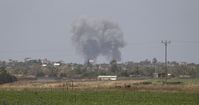
An Israeli drone on Saturday targeted a group of youths east of Gaza City near al-Awda refugee camp. No casualties were initially reported.
Eyewitnesses told Quds Press that an Israeli missile exploded near a group youths who were preparing to launch flaming ballons and kites.
Since March 30, Palestinians in the Gaza Strip have launched dozens of kites and helium balloons bearing flammable materials, and occasionally explosives, sparking near-daily fires that have burned thousands of acres of land in southern Israel.
This came after Israel’s mass killing of more than 130 Palestinians since the start of the Great March of Return.
Eyewitnesses told Quds Press that an Israeli missile exploded near a group youths who were preparing to launch flaming ballons and kites.
Since March 30, Palestinians in the Gaza Strip have launched dozens of kites and helium balloons bearing flammable materials, and occasionally explosives, sparking near-daily fires that have burned thousands of acres of land in southern Israel.
This came after Israel’s mass killing of more than 130 Palestinians since the start of the Great March of Return.
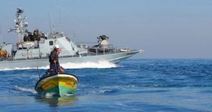
The Israeli naval forces on Saturday morning fired on a Gaza fishing boat off the shores of the Palestinian enclave, causing it to sink.
Three fishermen, who were on board, were detained during the incident, Zakariya Bakr, coordinator of fishermen committees, affirmed.
The detainee were identified as the two brothers Mahmoud and Kamel al-Naqah and Mohamed Sultan.
Over the past few years, Israeli forces have carried out dozens of attacks on Palestinian boats, arresting dozens of fishermen and confiscating several boats.
The Gaza Strip has been under an Israeli blockade since June 2007. The blockade has caused a decline in the standard of living as well as unprecedented levels of unemployment and unrelenting poverty.
Three fishermen, who were on board, were detained during the incident, Zakariya Bakr, coordinator of fishermen committees, affirmed.
The detainee were identified as the two brothers Mahmoud and Kamel al-Naqah and Mohamed Sultan.
Over the past few years, Israeli forces have carried out dozens of attacks on Palestinian boats, arresting dozens of fishermen and confiscating several boats.
The Gaza Strip has been under an Israeli blockade since June 2007. The blockade has caused a decline in the standard of living as well as unprecedented levels of unemployment and unrelenting poverty.
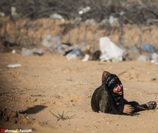
The Palestinian Health Ministry in Gaza has reported that Israeli soldiers injured, Friday, 206 Palestinians, including 44 with live fire, and added that seven of the Palestinians suffered life-threatening wounds.
Dr. Ashraf al-Qedra, the spokesperson of the Health Ministry in Gaza, said 120 of the 206 wounded Palestinians received treatment in filed clinics, and 86 others, including 44 who were shot with live fire, were rushed to several hospitals in the Gaza Strip; seven of them are in very serious conditions. video
He also stated that at least thirty Palestinians suffered the effects of teargas inhalation.
In his statement Dr. al-Qedra denounced the ongoing Israeli military targeting of medics in the Gaza Strip, and said the soldiers shot two medics, including one woman, and added that at least eight of the wounded Palestinians are children.
Media sources in Gaza said the soldiers shot four Palestinians, including two with live fire, in Abu Safiyya area, east of Jabalia, in northern Gaza, before they were rushed to the Indonesian Hospital in nearby Beit Lahia, suffering moderate wounds.
The army also injured several Palestinians with live fire, and gas bombs, east of Khuza’a town, east of Khan Younis, in southern Gaza Strip. One of them was shot with a bullet in his leg and was rushed to the European Hospital.
On June 20th 2018, a young man, identified as Mohammad Ghassan Abu Doqqa, 22, died of wounds sustained when he was shot and seriously injured by Israeli army fire on May 14th, 2018 during the Great Return March protest.
On June 18, 2018, a child identified as Zakariya Hussein Bashbash, 13, died of serious wounds sustained several days earlier when he was shot by Israeli soldiers at a protest in Gaza.
On the same day that Zakariya died from his wounds, Israeli soldiers killed Sabri Ahmad Abu Khader, 24, after shooting him with live fire near the Great Return Camp, east of Gaza city.
Their deaths bring the number of Palestinians who were killed by Israeli army fire since March 30th, 2018 to 129, including thirteen children.
The army also injured 13878 others, including hundreds of suffered serious wounds, mainly after being shot with expanding bullets.
Among the slain Palestinians are two medics, identified as Razan Najjar, 22, and Mousa Jaber Abu Hassanein, 36, while 223 others were injured, and the army caused damage to 37 ambulances.
The army also killed two journalists, identified as Yasser Mortaja, 31, and Ahmad Abu Hussein, 25, and wounded 144 others.
Updated From:
Israeli Soldiers Injure Five Palestinians In Gaza
Jun 22, 2018 @ 16:26
Israeli soldier shot, on Friday evening, at least five Palestinians, including two who were shot with live fire, after the army attacked the “Great Return March” protests along border areas, in the eastern part of the besieged Gaza Strip.
Medical sources at the Indonesian Hospital in Beit Lahia, in northern Gaza, said the soldiers shot two Palestinians with live fire, and two others with gas bombs, near the border fence in Abu Safiya area, east of nearby Jabalia, causing moderate wounds.
The soldiers also fired live rounds at protesters, east of Khuza’a town, east of Khan Younis in southern Gaza, wounding one Palestinian in his leg, before he was rushed to the European Hospital, while several others suffered the effects of teargas inhalation.
Furthermore, dozens of Palestinians suffered the effects of teargas inhalation, after the soldiers fired a barrage of gas bombs at protesters, east of Gaza.
Several Palestinians also burnt tires, and flew burning kites, in addition to flying balloons carrying Palestinian flags.
Dr. Ashraf al-Qedra, the spokesperson of the Health Ministry in Gaza, said 120 of the 206 wounded Palestinians received treatment in filed clinics, and 86 others, including 44 who were shot with live fire, were rushed to several hospitals in the Gaza Strip; seven of them are in very serious conditions. video
He also stated that at least thirty Palestinians suffered the effects of teargas inhalation.
In his statement Dr. al-Qedra denounced the ongoing Israeli military targeting of medics in the Gaza Strip, and said the soldiers shot two medics, including one woman, and added that at least eight of the wounded Palestinians are children.
Media sources in Gaza said the soldiers shot four Palestinians, including two with live fire, in Abu Safiyya area, east of Jabalia, in northern Gaza, before they were rushed to the Indonesian Hospital in nearby Beit Lahia, suffering moderate wounds.
The army also injured several Palestinians with live fire, and gas bombs, east of Khuza’a town, east of Khan Younis, in southern Gaza Strip. One of them was shot with a bullet in his leg and was rushed to the European Hospital.
On June 20th 2018, a young man, identified as Mohammad Ghassan Abu Doqqa, 22, died of wounds sustained when he was shot and seriously injured by Israeli army fire on May 14th, 2018 during the Great Return March protest.
On June 18, 2018, a child identified as Zakariya Hussein Bashbash, 13, died of serious wounds sustained several days earlier when he was shot by Israeli soldiers at a protest in Gaza.
On the same day that Zakariya died from his wounds, Israeli soldiers killed Sabri Ahmad Abu Khader, 24, after shooting him with live fire near the Great Return Camp, east of Gaza city.
Their deaths bring the number of Palestinians who were killed by Israeli army fire since March 30th, 2018 to 129, including thirteen children.
The army also injured 13878 others, including hundreds of suffered serious wounds, mainly after being shot with expanding bullets.
Among the slain Palestinians are two medics, identified as Razan Najjar, 22, and Mousa Jaber Abu Hassanein, 36, while 223 others were injured, and the army caused damage to 37 ambulances.
The army also killed two journalists, identified as Yasser Mortaja, 31, and Ahmad Abu Hussein, 25, and wounded 144 others.
Updated From:
Israeli Soldiers Injure Five Palestinians In Gaza
Jun 22, 2018 @ 16:26
Israeli soldier shot, on Friday evening, at least five Palestinians, including two who were shot with live fire, after the army attacked the “Great Return March” protests along border areas, in the eastern part of the besieged Gaza Strip.
Medical sources at the Indonesian Hospital in Beit Lahia, in northern Gaza, said the soldiers shot two Palestinians with live fire, and two others with gas bombs, near the border fence in Abu Safiya area, east of nearby Jabalia, causing moderate wounds.
The soldiers also fired live rounds at protesters, east of Khuza’a town, east of Khan Younis in southern Gaza, wounding one Palestinian in his leg, before he was rushed to the European Hospital, while several others suffered the effects of teargas inhalation.
Furthermore, dozens of Palestinians suffered the effects of teargas inhalation, after the soldiers fired a barrage of gas bombs at protesters, east of Gaza.
Several Palestinians also burnt tires, and flew burning kites, in addition to flying balloons carrying Palestinian flags.
22 june 2018
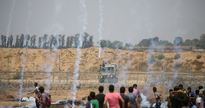
At least 35 Palestinians were injured on Friday after Israeli soldiers opened fire at thousands of Palestinians who gathered near the Gaza-Israel border fence to demand return to their homes in historical Palestine.
“35 demonstrators suffered live shot injuries and temporary asphyxia from teargas,” Palestinian Health Ministry said in a statement.
Earlier Friday, thousands of demonstrators began congregating at makeshift camps established along the security fence to take part in ongoing rallies against Israel’s decades-long occupation.
Since Mar. 30, when Palestinians began staging mass rallies near the security fence, more than 125 protesters have been martyred and hundreds more injured by Israeli army gunfire.
“35 demonstrators suffered live shot injuries and temporary asphyxia from teargas,” Palestinian Health Ministry said in a statement.
Earlier Friday, thousands of demonstrators began congregating at makeshift camps established along the security fence to take part in ongoing rallies against Israel’s decades-long occupation.
Since Mar. 30, when Palestinians began staging mass rallies near the security fence, more than 125 protesters have been martyred and hundreds more injured by Israeli army gunfire.
21 june 2018
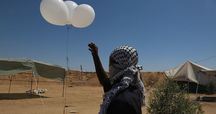
For the second time in the day, Israeli occupation forces’ (IOF) drones on Thursday fired at least one missile targeting incendiary balloons' launchers east of Rafah city in the besieged Gaza Strip, with no injuries reported.
The PIC reporter said that IOF soldiers have recently escalated their attacks on the borderline area which separates Gaza from 1948 Occupied Palestine.
The PIC reporter said that IOF soldiers have recently escalated their attacks on the borderline area which separates Gaza from 1948 Occupied Palestine.
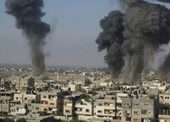
According to al-Akhbar Lebanese News Agency, the Hamas movement in Gaza has informed Egypt that it is willing to reach an indirect deal with Tel Aviv, which includes restoring calm, providing information about Israeli soldiers missing or killed in Gaza since the war in 2014, and other important issues, especially the siege and the economic conditions in the coastal region.
Israel is weighing the options for a large-scale invasion into Gaza.
Among the issues Hamas is asking for in return for calm is rebuilding the Airport, and establishing a Seaport in the coastal region. The two issues were part of the 2014 Ceasefire agreement, mediate by Egypt between Hamas and Israel.
It said that Cairo did not grant any promises regarding easing the restrictions on Rafah Border Crossing between Gaza and Egypt, but promised to hold talks with various Arab countries, including the United Arab Emirates, to begin implementing humanitarian projects to help the Palestinians in the besieged and improvised Gaza Strip.
It also said that the main point of discontent was reportedly Egypt’s dissatisfaction with the recent significant improvement in the relations between Hamas and the leadership in Iran, especially since the protest in Gaza, on the last week of Ramadan, carried the name of “International Jerusalem Day” which was held in Tehran.
According to the report, Egypt believes that Tehran is funding the “Great Return March” protests in Gaza, an issue that is coherent with allegations made by the Israeli government.
Nevertheless, Egypt promised to significantly improve the economic condition in Gaza, and to ease the suffering of the Palestinians in the coastal region, while Hamas still believes that Cairo has not provided any comprehensive vision, especially regarding ending the sanctions imposed on Gaza by the Palestinian Authority in the West Bank, the Israeli siege, in addition to the resolving the electricity crises in Gaza, and other important files.
The report also stated that Egypt’s proposals were coherent with recommendation presented by the United Nations, but some of the main issues are the position of the Palestinian Authority in the West Bank, which believes easing the restrictions on Gaza would give Hamas the impression that it can establish its “own state in the coastal region, instead of working to achieve a comprehensive Palestinian unity.”
The other pressing issue right now is Israel’s refusal to ease the sanctions and deadly blockade on Gaza, unless there is something thing in return, including information about the missing soldiers.
Furthermore, Israel’s political and military leaderships are weighing a comprehensive invasion and war against the Gaza Strip, to stop the protests, especially “the launching of burning kites from Gaza into Israeli settlements near the coastal region.”
Eyal Eizenberg, the former head of the Israeli Army’s Home Front Command, criticized the army for “not dealing with this issue effectively.”
He said that Israel should not be worried about entering a new war, and a ground invasion into the Gaza Strip, and added that “if Hamas continues the escalation, it will find the Israeli army operating in the heart of Gaza.”
The former army leader added that summer time is the best opportunity for Israel to wage a war on Gaza, and end all protests.
On his part, Israeli Interior Security Minster Gilad Erdan said that Israel has a big opportunity to launch a massive military invasion into Gaza in the coming months and added that “Hamas does not seem to understand how close Israel is to waging this war, especially after it fired 45 shells into Israeli communities across the border fence, in addition to the fires caused by incendiary kites.”
Israeli Channel Two said the army is preparing for this possibility, and is also deploying more Iron Dome systems, to intercept shells fired from Gaza, amidst increasing possibilities of a serious escalation.
However, the Israeli army said there has been a significant decrease in the number of burning kites flown from Gaza into fields and settlements across the border fence with Gaza.
Israeli reports said at least 20.000 Dunams have been burnt by these kites, flown by protesters in Gaza.
The Hamas movement said the only way for Israel to stop the kites is to completely lift the siege on the Gaza Strip.
It is worth mentioning that the Israeli army has killed 129 Palestinians, including thirteen children, since the beginning of the Great Return March, on Palestinian Land Day, March 30th, 2018.
The army also injured 13672 others, including hundreds who suffered serious wounds, mainly after being shot with the illegal expanding bullets.
Among the slain Palestinians are two medics, identified as Razan Najjar, 22, and Mousa Jaber Abu Hassanein, 36, while 223 medics were injured, and 37 ambulances were damaged by Israeli army fire.
The army also killed two journalists, identified as Yasser Mortaja, 31, and Ahmad Abu Hussein, 25, and wounded 144 others.
Israel is weighing the options for a large-scale invasion into Gaza.
Among the issues Hamas is asking for in return for calm is rebuilding the Airport, and establishing a Seaport in the coastal region. The two issues were part of the 2014 Ceasefire agreement, mediate by Egypt between Hamas and Israel.
It said that Cairo did not grant any promises regarding easing the restrictions on Rafah Border Crossing between Gaza and Egypt, but promised to hold talks with various Arab countries, including the United Arab Emirates, to begin implementing humanitarian projects to help the Palestinians in the besieged and improvised Gaza Strip.
It also said that the main point of discontent was reportedly Egypt’s dissatisfaction with the recent significant improvement in the relations between Hamas and the leadership in Iran, especially since the protest in Gaza, on the last week of Ramadan, carried the name of “International Jerusalem Day” which was held in Tehran.
According to the report, Egypt believes that Tehran is funding the “Great Return March” protests in Gaza, an issue that is coherent with allegations made by the Israeli government.
Nevertheless, Egypt promised to significantly improve the economic condition in Gaza, and to ease the suffering of the Palestinians in the coastal region, while Hamas still believes that Cairo has not provided any comprehensive vision, especially regarding ending the sanctions imposed on Gaza by the Palestinian Authority in the West Bank, the Israeli siege, in addition to the resolving the electricity crises in Gaza, and other important files.
The report also stated that Egypt’s proposals were coherent with recommendation presented by the United Nations, but some of the main issues are the position of the Palestinian Authority in the West Bank, which believes easing the restrictions on Gaza would give Hamas the impression that it can establish its “own state in the coastal region, instead of working to achieve a comprehensive Palestinian unity.”
The other pressing issue right now is Israel’s refusal to ease the sanctions and deadly blockade on Gaza, unless there is something thing in return, including information about the missing soldiers.
Furthermore, Israel’s political and military leaderships are weighing a comprehensive invasion and war against the Gaza Strip, to stop the protests, especially “the launching of burning kites from Gaza into Israeli settlements near the coastal region.”
Eyal Eizenberg, the former head of the Israeli Army’s Home Front Command, criticized the army for “not dealing with this issue effectively.”
He said that Israel should not be worried about entering a new war, and a ground invasion into the Gaza Strip, and added that “if Hamas continues the escalation, it will find the Israeli army operating in the heart of Gaza.”
The former army leader added that summer time is the best opportunity for Israel to wage a war on Gaza, and end all protests.
On his part, Israeli Interior Security Minster Gilad Erdan said that Israel has a big opportunity to launch a massive military invasion into Gaza in the coming months and added that “Hamas does not seem to understand how close Israel is to waging this war, especially after it fired 45 shells into Israeli communities across the border fence, in addition to the fires caused by incendiary kites.”
Israeli Channel Two said the army is preparing for this possibility, and is also deploying more Iron Dome systems, to intercept shells fired from Gaza, amidst increasing possibilities of a serious escalation.
However, the Israeli army said there has been a significant decrease in the number of burning kites flown from Gaza into fields and settlements across the border fence with Gaza.
Israeli reports said at least 20.000 Dunams have been burnt by these kites, flown by protesters in Gaza.
The Hamas movement said the only way for Israel to stop the kites is to completely lift the siege on the Gaza Strip.
It is worth mentioning that the Israeli army has killed 129 Palestinians, including thirteen children, since the beginning of the Great Return March, on Palestinian Land Day, March 30th, 2018.
The army also injured 13672 others, including hundreds who suffered serious wounds, mainly after being shot with the illegal expanding bullets.
Among the slain Palestinians are two medics, identified as Razan Najjar, 22, and Mousa Jaber Abu Hassanein, 36, while 223 medics were injured, and 37 ambulances were damaged by Israeli army fire.
The army also killed two journalists, identified as Yasser Mortaja, 31, and Ahmad Abu Hussein, 25, and wounded 144 others.
20 june 2018
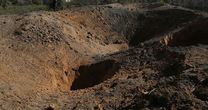
Israeli drones on Wednesday afternoon attacked a group of Palestinian youths who were flying fire kites east of al-Bureij refugee camp in the central Gaza Strip.
The PIC reporter said that at least one missile was fired toward the kite flyers with no casualties reported.
Several Israeli airstrikes hit the Gaza Strip on Tuesday night during which three Palestinians were injured. The Palestinian resistance factions responded by firing rockets and mortar shells toward Israeli settlements adjacent to the coastal enclave.
The PIC reporter said that at least one missile was fired toward the kite flyers with no casualties reported.
Several Israeli airstrikes hit the Gaza Strip on Tuesday night during which three Palestinians were injured. The Palestinian resistance factions responded by firing rockets and mortar shells toward Israeli settlements adjacent to the coastal enclave.
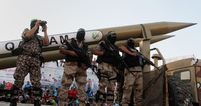
The Hamas Movement has said that the Palestinian resistance’s legitimate response to overnight Israeli attacks on Gaza has sent a message to the Israeli occupation army that its shelling will be confronted with shelling.
In Twitter remarks, Hamas spokesman Fawzi Barhoum hailed the Palestinian resistance for responding to the aerial aggression against Gaza by firing a volley of rockets on Israeli targets, describing the response as “legitimate.”
Barhoum stated that the “shelling for shelling message” confirmed that the resistance was able to determine the rules of engagements in its own way.
“The resistance will not allow the enemy to take our people aside or impose new equations. It (Israel) has to face the consequences,” the spokesman underlined.
In response to Israeli aerial attacks on Gaza after midnight on Wednesday, the resistance fired a barrage of projectiles at Israeli settlements and military posts surrounding the besieged enclave.
In Twitter remarks, Hamas spokesman Fawzi Barhoum hailed the Palestinian resistance for responding to the aerial aggression against Gaza by firing a volley of rockets on Israeli targets, describing the response as “legitimate.”
Barhoum stated that the “shelling for shelling message” confirmed that the resistance was able to determine the rules of engagements in its own way.
“The resistance will not allow the enemy to take our people aside or impose new equations. It (Israel) has to face the consequences,” the spokesman underlined.
In response to Israeli aerial attacks on Gaza after midnight on Wednesday, the resistance fired a barrage of projectiles at Israeli settlements and military posts surrounding the besieged enclave.
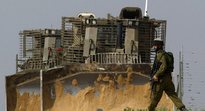
Israeli warplanes at dawn Wednesday bombed several resistance posts in different areas of the besieged Gaza Strip, prompting resistance factions to retaliate.
The Palestinian Information Center (PIC) in Gaza said that two Palestinians suffered injuries after midnight after at least two air-to-surface missiles targeted an agricultural plot of land to the west of Rafah, south of Gaza.
The wounded citizens were identified as police officers.
Aerial attacks also targeted two resistance site near al-Baydar Resort west of Gaza City and in an area west of Khan Younis city, south of Gaza.
Another resistance site in northern Gaza was bombed and destroyed in an airstrike.
Two citizens were reportedly injured in the air raids on Khan Younis and northern Gaza.
Later, warplanes bombed the same resistance post in northern Gaza as well as the civil administration in Gaza, a naval post southwest of Khan Younis, and two resistance sites at the entrance to al-Maghazi refugee camps and in Rafah area.
In response, the Palestinian resistance responded by firing several projectiles at Israeli areas near Gaza in accordance with the rules of engagement.
Local sources told the PIC that the resistance was able to launch rocket counterattacks on Israeli settlements and military posts surrounding Gaza despite the intensive Israeli overflights.
The Palestinian Information Center (PIC) in Gaza said that two Palestinians suffered injuries after midnight after at least two air-to-surface missiles targeted an agricultural plot of land to the west of Rafah, south of Gaza.
The wounded citizens were identified as police officers.
Aerial attacks also targeted two resistance site near al-Baydar Resort west of Gaza City and in an area west of Khan Younis city, south of Gaza.
Another resistance site in northern Gaza was bombed and destroyed in an airstrike.
Two citizens were reportedly injured in the air raids on Khan Younis and northern Gaza.
Later, warplanes bombed the same resistance post in northern Gaza as well as the civil administration in Gaza, a naval post southwest of Khan Younis, and two resistance sites at the entrance to al-Maghazi refugee camps and in Rafah area.
In response, the Palestinian resistance responded by firing several projectiles at Israeli areas near Gaza in accordance with the rules of engagement.
Local sources told the PIC that the resistance was able to launch rocket counterattacks on Israeli settlements and military posts surrounding Gaza despite the intensive Israeli overflights.
19 june 2018
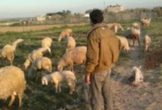
Israeli soldiers opened fire, on Tuesday morning, at many Palestinian shepherds, hundreds of meters away from the border fence, in the Gaza Strip.
Media sources said the soldiers, stationed in Kissufim Crossing, fired many live rounds at shepherds, east of Deir al-Balah, in central Gaza.
They added that the army also fired live rounds at Palestinians, east of Abasan al-Kabeera town, east of Khan Younis, in the southern part of the Gaza Strip.
The attacks did not lead to casualties, while the army said it opened fire at the Palestinians for “approaching the border fence.”
Media sources said the soldiers, stationed in Kissufim Crossing, fired many live rounds at shepherds, east of Deir al-Balah, in central Gaza.
They added that the army also fired live rounds at Palestinians, east of Abasan al-Kabeera town, east of Khan Younis, in the southern part of the Gaza Strip.
The attacks did not lead to casualties, while the army said it opened fire at the Palestinians for “approaching the border fence.”
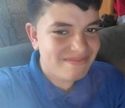
Zakariya Hussein Bashbash, 13
Palestinian medical sources have reported that a child died, Monday, from serious wounds he suffered after Israeli soldiers shot him several days earlier in Gaza.
The child, Zakariya Hussein Bashbash, 13, suffered a very serious injury, several days ago, after an Israeli soldier stationed across the border fence shot him with a live round.
The Health Ministry in Gaza said Zakariya, who was shot east of the al-Boreij refugee camp in central Gaza, was rushed to the Shifa Medical Center.
Zakariya, from the al-Maghazi refugee camp in central Gaza, was then moved to surgery, and remained at the Intensive Care Unit, until he succumbed to his serious wounds.
Palestinian child dies of his wounds in March of return events
The Palestinian Health Ministry announced on Monday the death of a 13-year-old child, Zakariya Beshbesh, of his wounds after being shot by Israeli occupation forces (IOF) in the events of the Great March of Return east of al-Buraij in central Gaza Strip.
The spokesman of the ministry, Ashraf al-Qudra, said that the slain child was receiving treatment in the intensive care unit at al-Shefa Hospital after his serious injury.
The martyrdom of Child Beshbesh brought the number of the martyrs of the Great March of Return to 136 including 7 martyrs whose bodies are still detained by the IOF. However, the injuries have jumped to 13,000 Palestinians.
Palestinian medical sources have reported that a child died, Monday, from serious wounds he suffered after Israeli soldiers shot him several days earlier in Gaza.
The child, Zakariya Hussein Bashbash, 13, suffered a very serious injury, several days ago, after an Israeli soldier stationed across the border fence shot him with a live round.
The Health Ministry in Gaza said Zakariya, who was shot east of the al-Boreij refugee camp in central Gaza, was rushed to the Shifa Medical Center.
Zakariya, from the al-Maghazi refugee camp in central Gaza, was then moved to surgery, and remained at the Intensive Care Unit, until he succumbed to his serious wounds.
Palestinian child dies of his wounds in March of return events
The Palestinian Health Ministry announced on Monday the death of a 13-year-old child, Zakariya Beshbesh, of his wounds after being shot by Israeli occupation forces (IOF) in the events of the Great March of Return east of al-Buraij in central Gaza Strip.
The spokesman of the ministry, Ashraf al-Qudra, said that the slain child was receiving treatment in the intensive care unit at al-Shefa Hospital after his serious injury.
The martyrdom of Child Beshbesh brought the number of the martyrs of the Great March of Return to 136 including 7 martyrs whose bodies are still detained by the IOF. However, the injuries have jumped to 13,000 Palestinians.
Truce violations List of names Pictures of martyrs
Days: Aug: 26 - 25 - 24 - 23 - 22 - 21 - 20 - 19 - 18 - 17 - 16 - 15 - 14 - 13 - 12 - 11 - 10 - 9 - 8 - 7 - 6 - 5 - 4 - 3 - 2 - 1
July: 31 - 30 - 29 - 28 - 27 - 26 - 25 - 24 - 23 - 22 - 21 - 20 - 19 - 18 - 17 - 16 - 15 - 14 - 13 - 12 - 11 - 10 - 9 - 8
